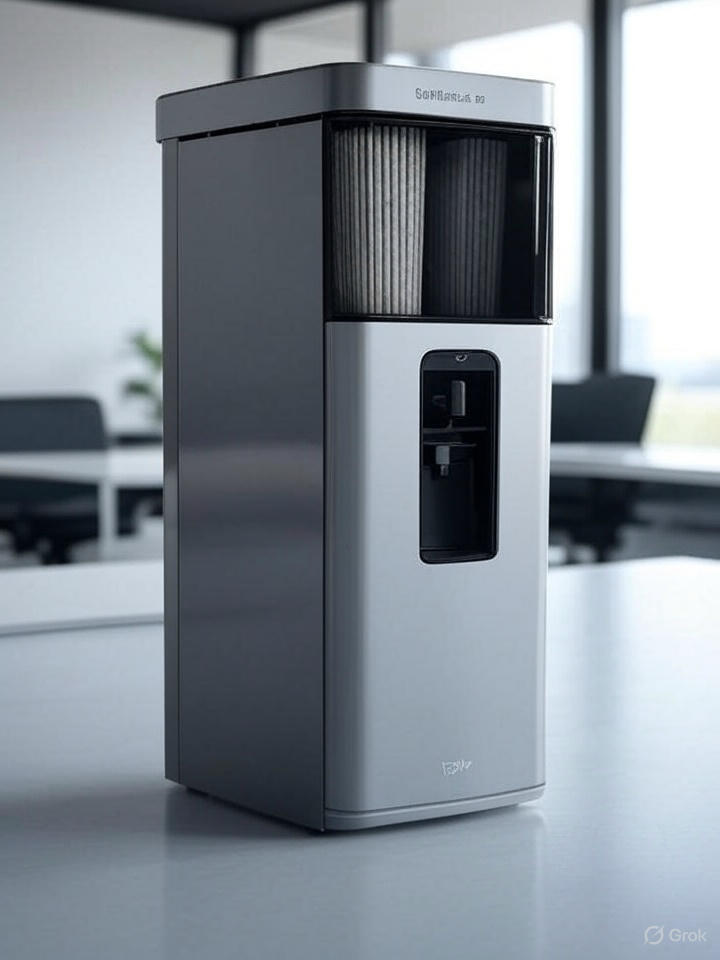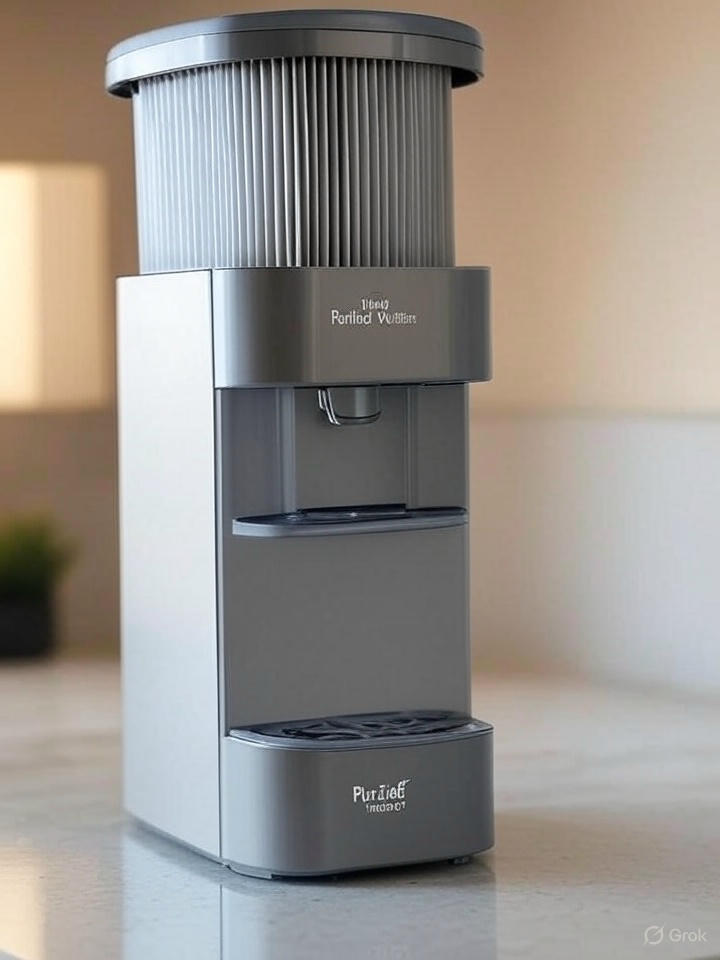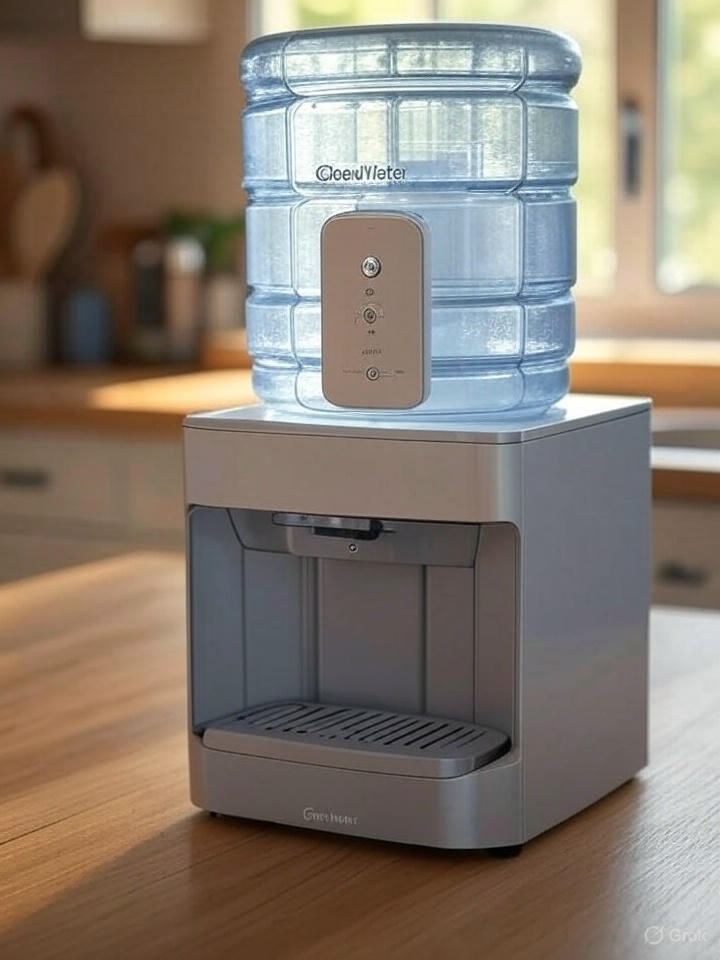In an era where hydration is paramount for health and convenience is king, the water bottle dispenser has emerged as a game-changer for homes, offices, and outdoor settings. These innovative devices, designed to streamline access to clean, filtered water from standard bottles or jugs, offer a practical alternative to traditional water coolers or repetitive bottle purchases.
Whether you’re looking to reduce plastic waste, enhance workplace efficiency, or ensure hydration on the go, a water bottle dispenser can meet a variety of needs. In this comprehensive blog post we’ll explore the benefits, versatile uses, and detailed reviews of water bottle dispenser options, drawing on their features, user experiences, and practical insights to help you make an informed decision.
This guide will cover the different types of water bottle dispenser systems—top-loading, bottom-loading, portable, and bottleless—along with their advantages, installation considerations, and how they compare to other hydration solutions. We’ll also address key points like maintenance, cost-effectiveness, and sustainability to ensure you get the most out of your investment. Let’s dive into the world of water bottle dispenser technology and discover how it can transform your hydration routine!

What Is a Water Bottle Dispenser?
A water bottle dispenser is a device that dispenses water from a bottle or jug, typically ranging from 1-gallon to 5-gallon capacities, into cups or containers with ease. Unlike traditional water coolers that rely on gravity-fed systems, modern water bottle dispenser units often include features like temperature control (hot, cold, or room temperature), filtration, and automated dispensing mechanisms. They come in several forms: top-loading models where the bottle sits atop the unit, bottom-loading versions that hide the bottle in a cabinet, portable pumps for on-the-go use, and bottleless systems connected to a water line.
These dispensers are compatible with standard water bottles, such as those from brands like Nestlé, Primo, or H-E-B, and are crafted from materials like stainless steel or BPA-free plastic to ensure safety and durability. Some models incorporate advanced technologies like UV sterilization or reverse osmosis filtration, making them a hygienic and efficient choice for drinking water. The versatility and convenience of a water bottle dispenser make it a popular solution for residential, commercial, and recreational settings.
Benefits of a Water Bottle Dispenser
Investing in a water bottle dispenser brings a host of advantages that enhance daily life and promote well-being. Here is a thorough analysis of the main advantages:
1. Convenience and Accessibility
A water bottle dispenser eliminates the need to manually pour from heavy jugs or refill small bottles constantly. With a simple push of a button or lever, you get instant access to water, whether it’s chilled for a refreshing drink or hot for tea. Bottom-loading models, like the Avalon A4, hide the bottle in a cabinet, reducing the effort of lifting a 40-pound 5-gallon jug. Portable options, such as the COWIN Electric Pump, allow you to use a dispenser anywhere, making hydration effortless for families, offices, or camping trips.
2. Cost-Effectiveness Over Time
While the initial purchase of a water bottle dispenser (ranging from $15 for portable pumps to $150–$200 for advanced units) may seem steep, it saves money compared to buying individual bottled water. A 5-gallon bottle costs around $8–$10, delivering 640 ounces at roughly $0.01–$0.02 per ounce, versus $1–$2 for a 16.9 oz. single bottle. Over months, the savings accumulate, especially with delivery services that swap empties, as noted by users on forums discussing Primo Water.
3. Improved Hydration Habits
Easy access to water encourages regular drinking, which is vital for health—supporting digestion, focus, and energy levels. A water bottle dispenser with temperature options caters to different preferences, prompting users to stay hydrated throughout the day. Office managers report increased water intake among employees, with one stating, “The dispenser in our break room has cut down on soda consumption.”
4. Environmental Sustainability
By reducing reliance on single-use plastic bottles, a water bottle dispenser helps combat the 8 million metric tons of plastic waste entering oceans annually. Reusable 5-gallon bottles, often exchanged through services like Primo, further lower environmental impact. Refilling personal bottles is encouraged by portable dispensers, which supports the expanding movement toward environmentally friendly hydration options.
5. Temperature Versatility
To meet a variety of needs, many water bottle dispenser models provide hot, cold, and room temperature water. Hot water is perfect for instant coffee or soups, while cold water refreshes on warm days. Units like the Brio Bottom Load feature child-safety locks on hot water taps, ensuring safety in homes with kids, a feature praised by parents online.
6. Space Efficiency and Design
Bottom-loading and countertop models save space compared to storing cases of bottled water. The sleek designs of units like the Manastin Bottom-Loading Dispenser, with LED displays and compact footprints, blend seamlessly into kitchens or offices. Portable versions are ideal for small apartments or outdoor use, maximizing usability without clutter.
7. Health and Safety Features
Advanced water bottle dispenser models include filtration (e.g., UV or carbon filters) to remove impurities, offering cleaner water than some tap sources. Stainless steel interiors prevent bacterial growth, and regular cleaning protocols ensure hygiene. This is a boon for those in areas with questionable water quality, as one user noted, “Filtered dispenser water tastes better than my tap.”

Practical Uses of a Water Bottle Dispenser
The water bottle dispenser is a versatile tool, adaptable to various scenarios. Here’s how it can be integrated into daily life:
1. Home Hydration
A 5-gallon bottom-loading dispenser, like the Avalon A4, provides a week’s supply for a family of four, with hot and cold options for cooking or drinking. The 16.9 oz. bottle compatibility suits smaller households, with bottles stored in the fridge for convenience.
2. Office and Workplace Efficiency
Offices benefit from 5-gallon dispensers or 24-pack bottle systems, supporting 30–50 employees with minimal refills. The temperature variety boosts morale, with one office worker saying, “Hot water for tea makes my day better.” Portable units can be placed in meeting rooms for added flexibility.
3. Emergency Preparedness
A water bottle dispenser with a 5-gallon jug ensures a week’s emergency supply per person (1 gallon daily). Portable pumps, like the Keweis Desktop Dispenser, offer backup hydration during power outages, making them essential for disaster kits.
4. Outdoor Activities
Portable water bottle dispenser pumps, such as the Myvision Automatic Pump, work with 5-gallon jugs for camping or picnics. The lightweight design (around 1 pound) fits into backpacks, providing clean water without the need for heavy lifting.
5. Specialized Applications
Hot water from a dispenser is ideal for baby formula or instant meals, while cold water suits pet hydration stations (e.g., Primo’s Pet Station models). Filtered options enhance safety for sensitive uses like medical device cleaning.
In-Depth Review of Water Bottle Dispensers
Let’s review the Avalon A4 Bottom-Loading Water Cooler and the COWIN Portable Electric Water Bottle Pump, focusing on performance, design, and user feedback.
Performance: How Well Do They Work?
The Avalon A4, compatible with 3- and 5-gallon bottles, delivers cold (50–55°F), room-temperature, and hot (185°F) water with consistent flow. Users report, “Cools water quickly, perfect for a busy office,” though heavy use can strain the cooling system, requiring an hour to stabilize. The COWIN pump, fitting 2–5-gallon bottles, dispenses 1.2 liters per minute, with one camper noting, “Great for outdoor use, no spills.” Both perform reliably, though the Avalon’s filtration is basic compared to bottleless models.
Design: Form Meets Function
The Avalon A4 features a stainless steel cabinet (41 inches high, 12 inches wide) with a hidden bottle compartment, reducing lift effort. The LED indicator alerts for empty bottles, though the drip tray requires frequent cleaning. The COWIN pump, at 6 inches tall and 1 pound, uses a rechargeable battery and silicone cap, offering portability but limited height for large containers. Both use BPA-free materials, ensuring safety.
User Feedback: What Are People Saying?
The Avalon A4 earns a 4.5-star average on retail sites, with praise for design: “Easy to use, looks great in my kitchen.” Complaints include noise during cooling, with one saying, “A bit loud when running.” The COWIN pump scores 4.3 stars, with users loving convenience: “Perfect for camping trips.” Some note battery life issues, with another stating, “Needs charging after a day of heavy use.” Both receive positive feedback, with minor usability concerns.
Pros and Cons
Avalon A4 Bottom-Loading Water Cooler
Pros:
- Three temperature settings (hot, cold, room).
- Bottom-loading reduces lifting effort.
- Sleek stainless steel design.
- Child-safety lock on hot water.
Cons:
- Noisy cooling system.
- Basic filtration (no UV or RO).
- Drip tray requires regular cleaning.
COWIN Portable Electric Water Bottle Pump
Pros:
- Lightweight and portable (1 pound).
- Fits 2–5-gallon bottles.
- Rechargeable and easy to use.
- Ideal for outdoor settings.
Cons:
- Limited height for large containers.
- Battery life varies with use.
- No temperature control.

Types of Water Bottle Dispensers
1. Top-Loading Dispensers
These units place the bottle on top, using gravity to dispense water. They’re affordable ($100–$150) and easy to install but require lifting heavy jugs, making them less ideal for those with mobility issues.
2. Bottom-Loading Dispensers
With the bottle hidden in a cabinet, these models (e.g., Avalon A4) reduce lifting effort and offer a cleaner look. Priced at $150–$200, they’re popular for homes and offices but need space for the cabinet.
3. Portable Dispensers
Pumps like the COWIN or Myvision, costing $15–$20, work with any bottle size and are perfect for travel or small spaces. They are incredibly portable, however they do not have temperature control.
4. Bottleless Dispensers
Connected to a water line, these units (e.g., Avalon A5) use filtration (RO or UV) for continuous supply. They cost $200–$300 plus installation but eliminate bottle management.
Installation and Maintenance Considerations
Installation
Top- and bottom-loading water bottle dispenser units require minimal setup—just place the bottle and plug in. Portable pumps need battery charging or USB connection. Bottleless models require plumbing, potentially costing $100–$300, depending on water line proximity.
Maintenance
Clean drip trays and interiors with vinegar or mild soap every 1–3 months to prevent mold. Replace filters in bottleless units every 6–12 months (costing $30–$50). Users recommend, “Regular cleaning keeps the taste fresh,” based on online tips.
Cost-Effectiveness and Sustainability
A water bottle dispenser pays off over time. A $150 unit with $10 biweekly 5-gallon deliveries totals $670 annually, versus $1,200 for 500 single 16.9 oz. bottles. Reusable jugs demonstrate sustainability by cutting down on plastic waste. Opt for energy-efficient models (e.g., Energy Star-rated) to lower electricity costs ($20–$50 yearly).
Comparison with Other Hydration Solutions
Water Bottle Dispenser vs. Water Filters
Filters (e.g., Brita) require pitcher refills and lack temperature options, while a water bottle dispenser offers instant access and variety, though at a higher upfront cost.
Water Bottle Dispenser vs. Bottled Water
Bottled water is convenient but expensive ($0.25–$1 per ounce) and wasteful. A water bottle dispenser with bulk bottles costs $0.01–$0.02 per ounce and reduces waste.
Water Bottle Dispenser vs. Tap Water
Tap water is free but may contain contaminants. A water bottle dispenser with filtration provides safer, tastier water, especially in areas with poor quality.
Key Points to Mention About Water Bottle Dispensers
- Bottle Compatibility: Ensure your dispenser fits 3- or 5-gallon jugs (e.g., Primo, Nestlé).
- Temperature Options: Choose hot/cold models for versatility or portable for simplicity.
- Space Needs: Measure for bottom-loading (41 inches high) or portable (6 inches) units.
- Safety Features: Look for child locks on hot water taps.
- Maintenance: Clean monthly and replace filters as needed.
- Cost: Balance initial investment ($15–$300) with long-term savings.
- Portability: Consider pumps for outdoor use or fixed units for homes.
Tips for Getting the Most Out of a Water Bottle Dispenser
- Optimize Placement: Position near power outlets or water lines for bottleless models.
- Clean Regularly: Use vinegar solution every month to prevent buildup.
- Monitor Usage: Track 5-gallon jug refills to avoid running out.
- Leverage Delivery: Sign up for services like Primo for hassle-free swaps.
- Store Safely: Keep portable units dry and charged for outdoor trips.

Conclusion: Is a Water Bottle Dispenser Right for You?
A water bottle dispenser is a versatile, cost-effective, and sustainable hydration solution that caters to diverse needs. These gadgets improve daily living while lessening their influence on the environment, from the portability of the COWIN pump for outdoor excursions to the ease of use of the Avalon A4 for houses. Benefits like improved hydration, temperature options, and long-term savings outweigh minor drawbacks like maintenance or initial cost, making them ideal for families, offices, and travelers.
Whether you’re dispensing cold water for a workout or hot water for a meal, a water bottle dispenser offers reliability and efficiency. Choose the type that fits your space and budget, invest in regular care, and embrace a hydration upgrade—one refreshing pour at a time!
This post contains affiliate links. If you purchase through them, I may earn a commission — at no extra cost to you.
